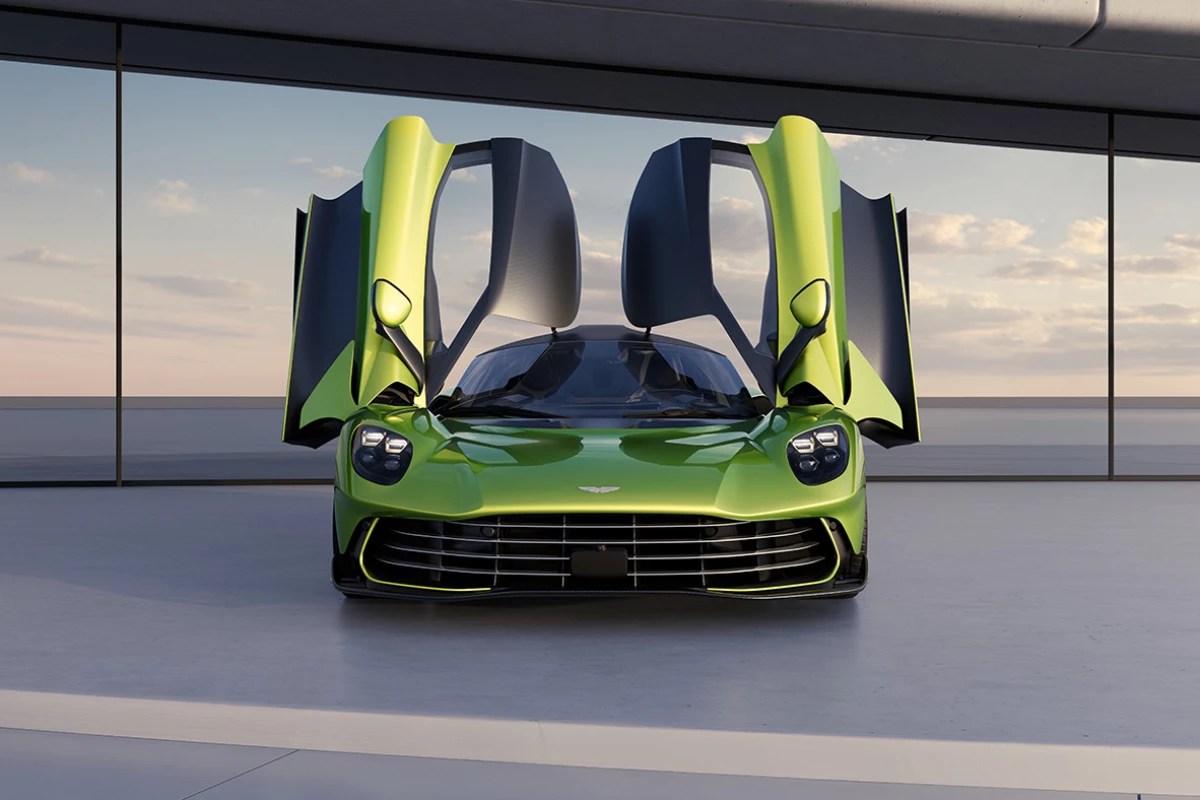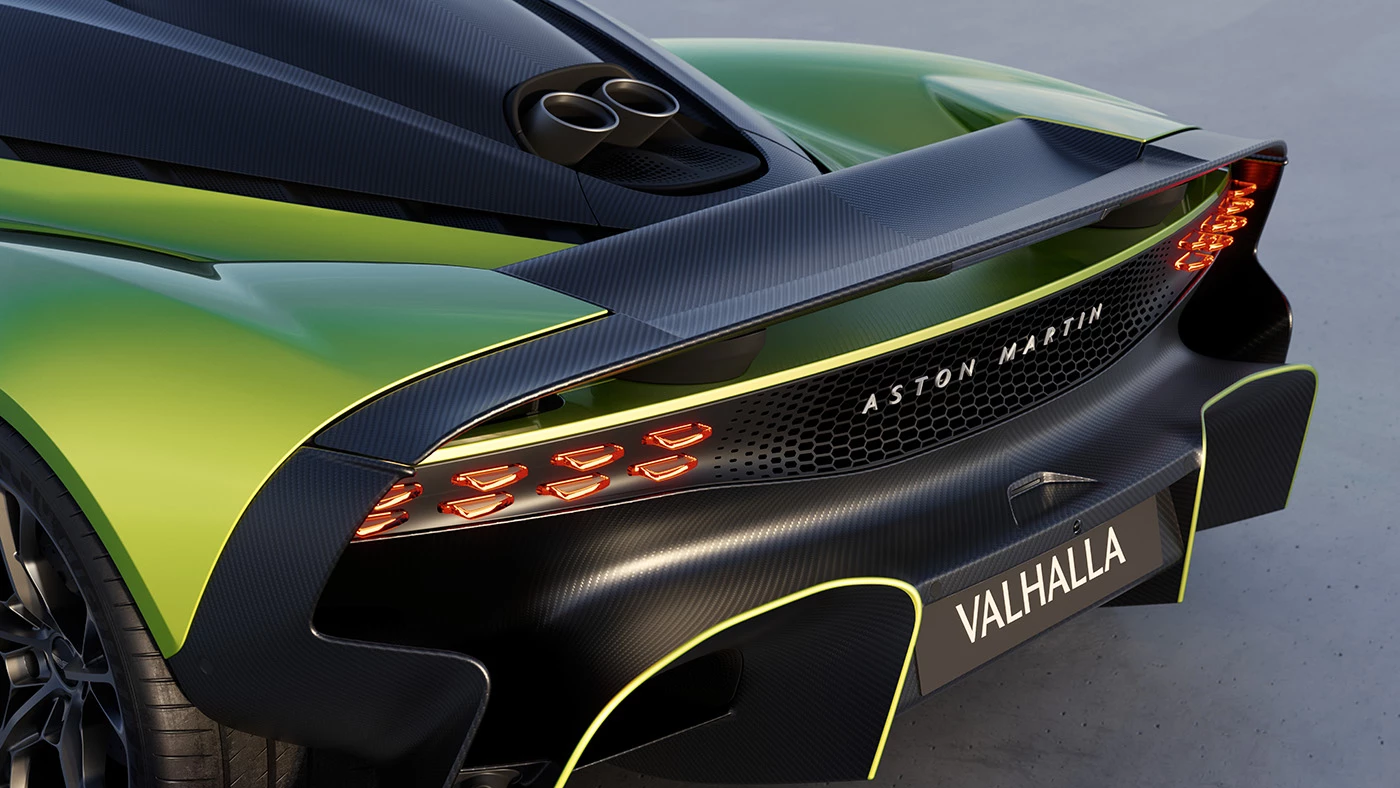At long last, Aston Martin has properly, officially, taken the wraps off its Valhalla supercar – and its latest performance figures make it totally worth the wait.
This all-powerful British four-wheel-drive machine is the company's first series production mid-engined supercar, and also its first plug-in hybrid – just don't plan to go very far on electric power alone.
The main component of this exquisite beast's powertrain is a custom 4-liter twin-turbo flat-plane crank V8 engine, mated to a new 8-speed Dual Clutch Transmission (DCT). That V8 puts out a blistering 816 hp, and is paired with three electric motors for a total of 1,065 hp.
Meanwhile, active aerodynamics help generate 1,323 lb (600 kg) of downforce. All that adds up to a 0-100 km/h (0-62 mph) time of just 2.5 seconds, and a top speed of 217 mph (350 km/h).
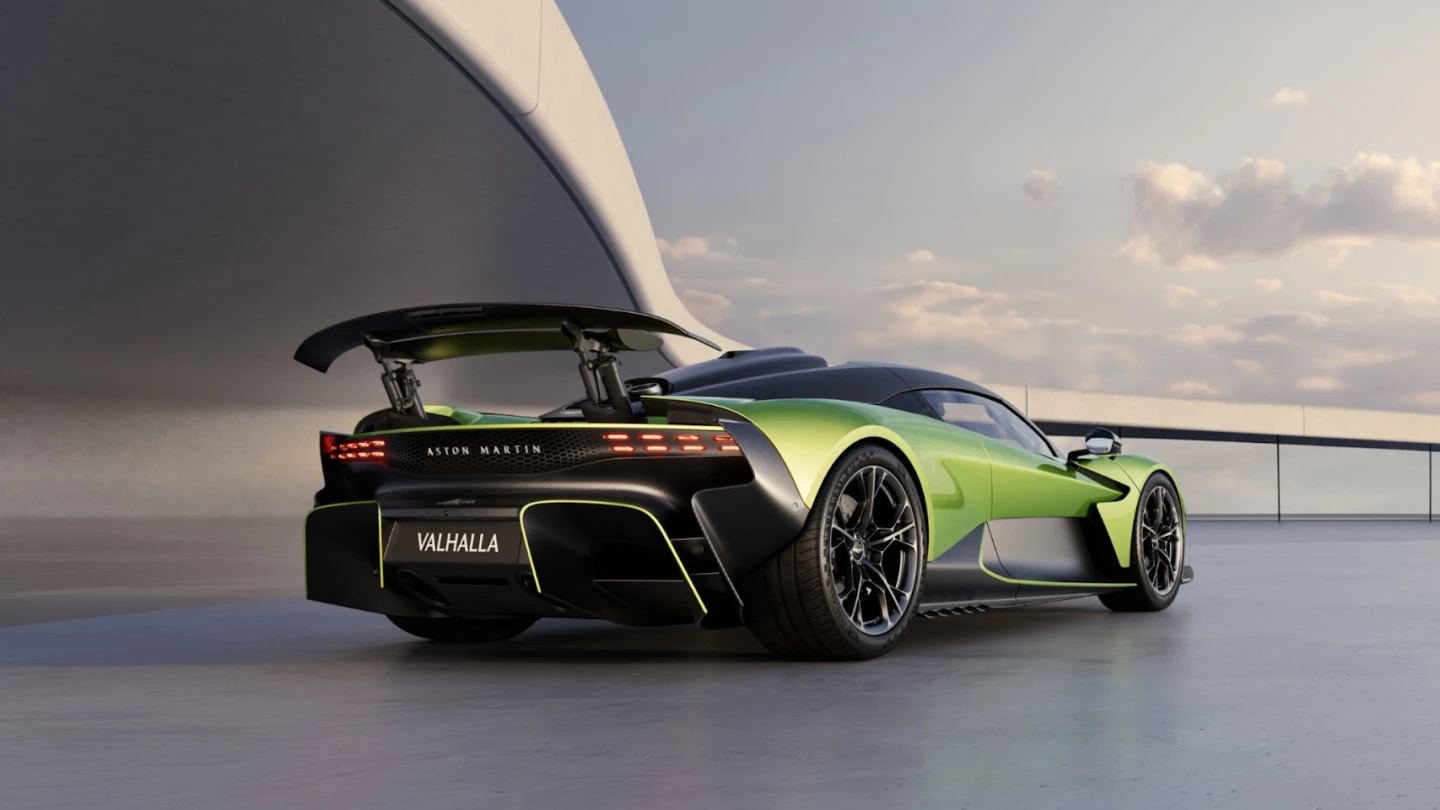
If that last figure seems familiar, it's because that's the same top speed you'll manage behind the wheel of a Ferrari F80 from earlier this year, a 2023 Lamborghi Revuelto (which also happens to be a plug-in hybrid), or a McLaren W1.
There are differing theories as to why some supercars are limited to this speed, but Auto Trader reckons it's because it simply works out to a round 350 km/h number. Let me know in the comments if you've heard a better explanation.
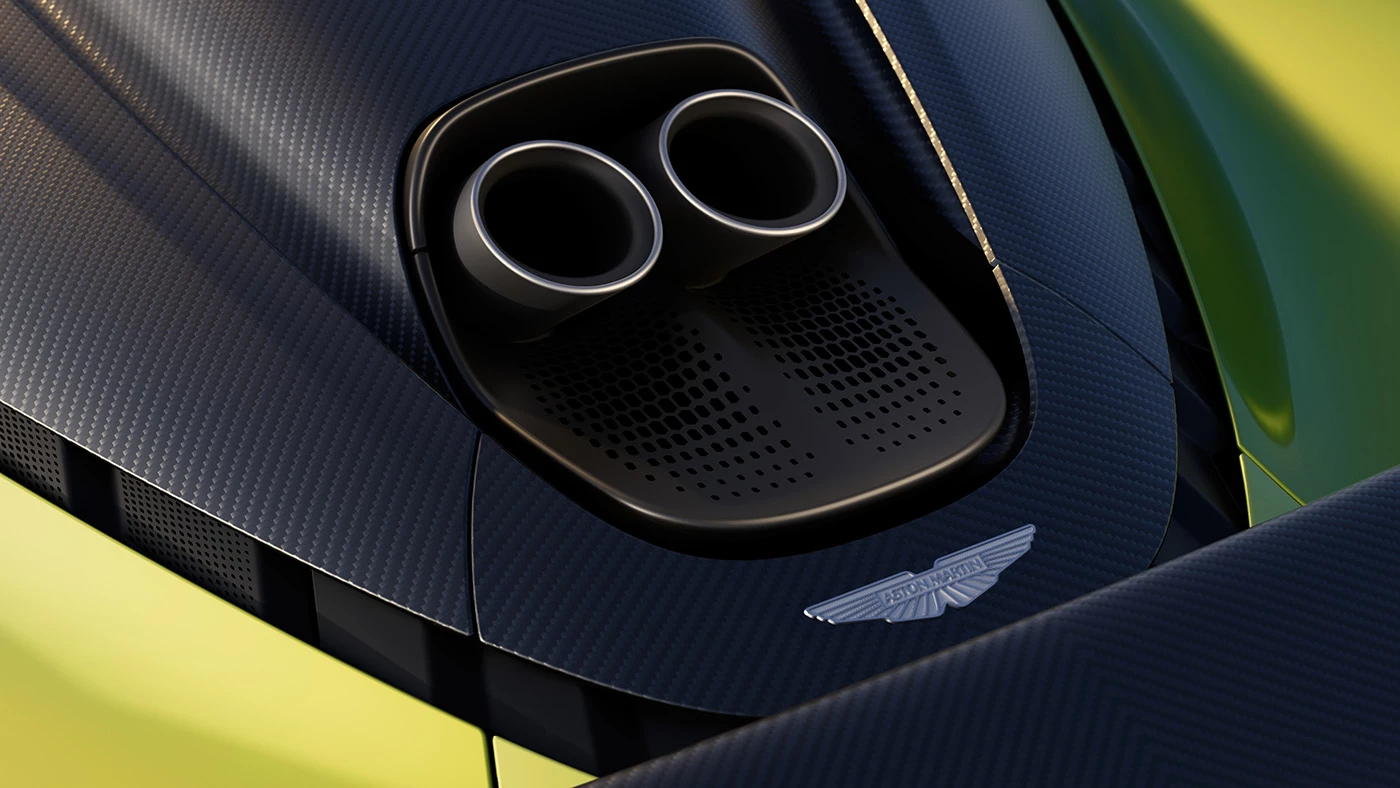
The Valhalla has been a long time coming. It draws from the even more powerful Valkyrie (which does 250 mph/402 km/h), and was first unveiled at the Geneva Motor Show back in 2019.
Aston Martin has put a lot of tech to work under the Valhalla's hood – and above it. After the car crosses 149 mph and generates maximum downforce, active aerodynamics gradually reduce the angle of attack of the front and rear wings to ‘bleed’ excess downforce as you speed up, keeping the car balanced through to its top speed.
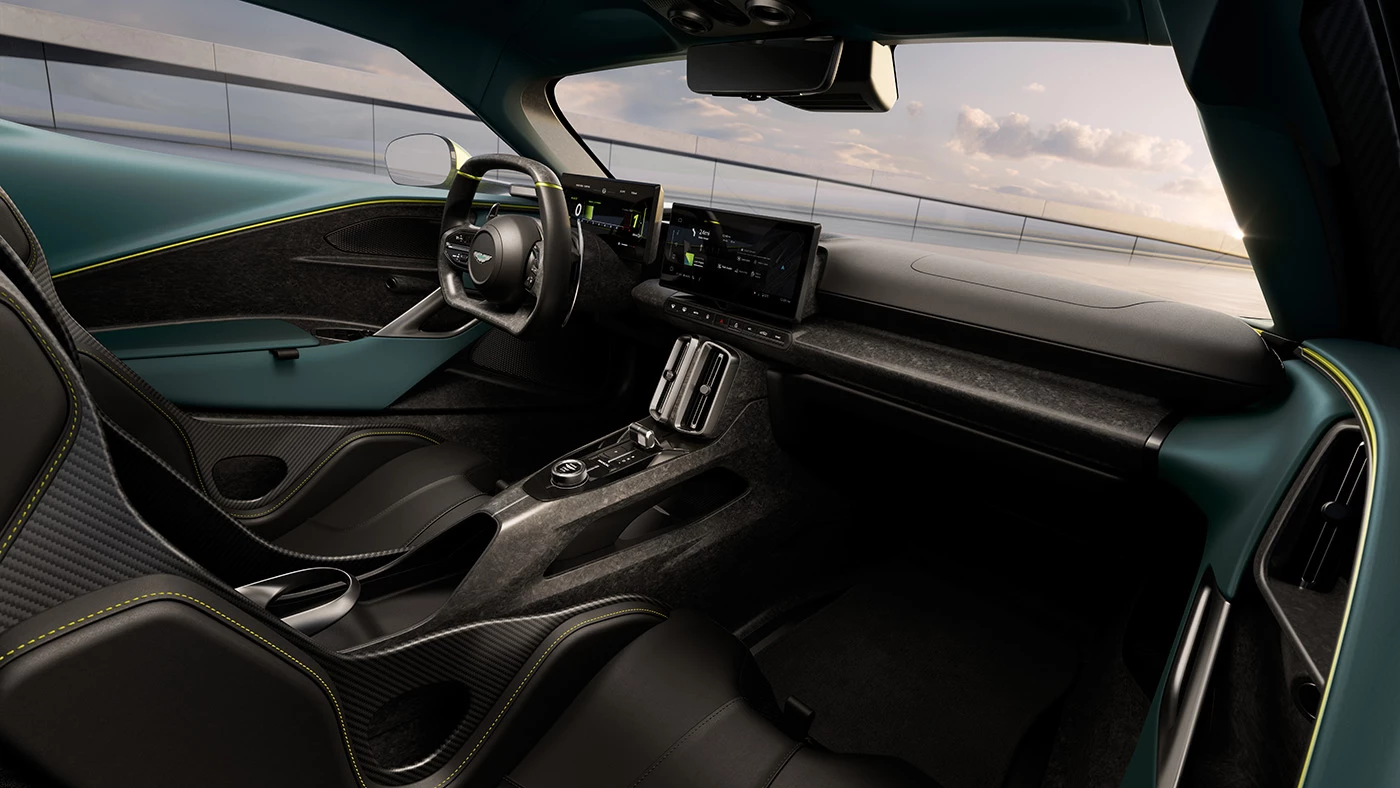
The 8-speed DCT comes with an electric motor that's responsible for starting the car. The other three electric motors from the hybrid powertrain take care of turbo lag with instantly delivered torque, and even offer a bit of boost for maximum performance.
There's also an Integrated Vehicle Dynamics Control (IVC) system managing the two axles. Torque vectoring on the front axle and Electronic Limited-Slip Differential make for precise steering and stability. You can switch between four drive modes to experience different characteristics in the cockpit.
And speaking of the interiors, you'll find a whole lot of carbon fiber in the racecar-style cabin just as you would on the outside – it's used in the one-piece seats, the F1-inspired steering wheel, and a brace that runs through the width of the cabin to support the instrument panel.

You can choose from lots of colors for the interior materials and trims, down to the seatbelt and contrast stitching. There are also several options for the exterior finishes, liveries,, wheels, and brakes – and you can even get the whole car in gloss or satin carbon fiber if you prefer.

Only 999 units of the Valhalla will be made, with deliveries starting in the second half of 2025. At an estimated US$1 million and change, it's a lot less than the $2.1 million McLaren W1 and the $3.9 million Ferrari F80 – but a bit more than the $600,000 Lamborghini Revuelto.
Decisions, decisions, huh?
Source: Aston Martin
